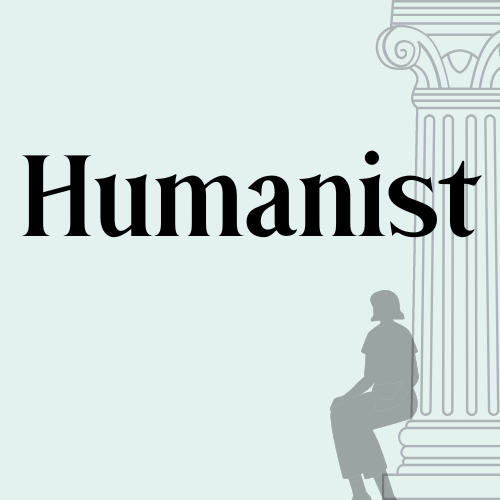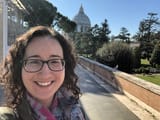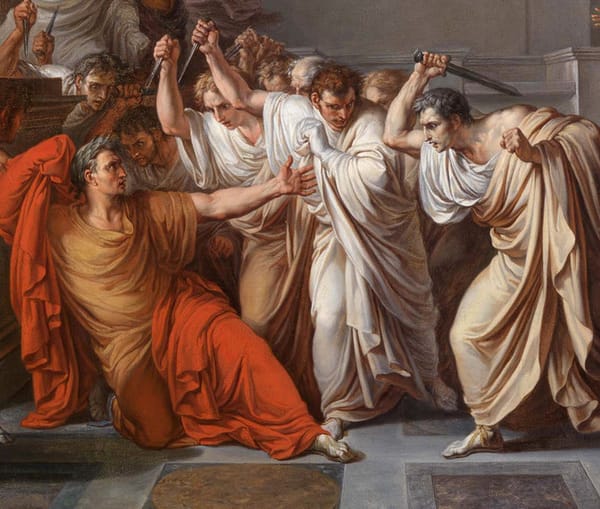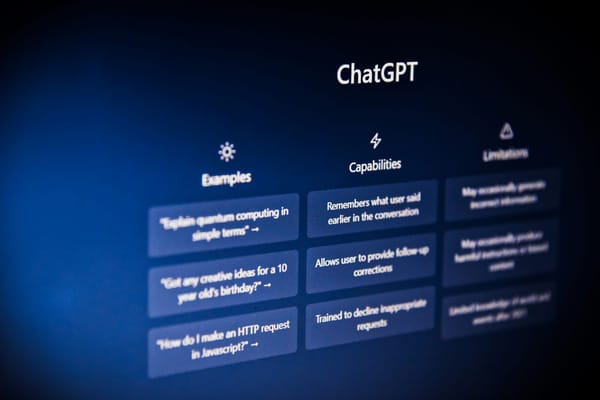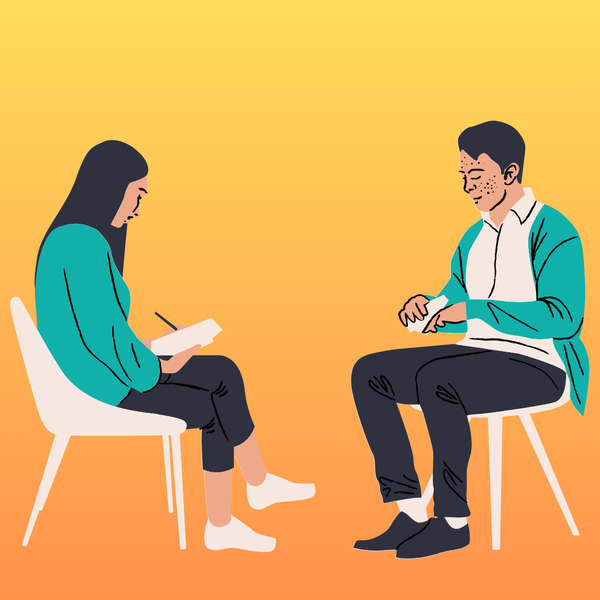Sharing the Wealth: what is an "asset-based" approach to teaching?
It's worth reflecting on what assets you bring to the table as a learner, too, as you think about how to make the most of the assets others bring to your classrooms.

At the University of New Hampshire, I worked with a colleague to develop a course on "Individual and Society in the Ancient World." We created a unit on civil disobedience in which we read Antigone, Lysistrata, Henry David Thoreau's essay on civil disobedience, and some articles on contemporary examples. We also read The Martyrdom of Saints Perpetua and Felicitas, a narrative of two Roman women from North Africa who were executed in the arena in 203 CE for refusing to renounce their Christian faith. One student expressed total bafflement about why anyone would die rather than recant – it's not like they couldn't keep practicing their faith or holding their beliefs in secret. To my surprise, a group of three students spoke up: they were all in a Christian youth group together, and they proceeded to deliver an impromptu lecture on theological ideas about martyrdom and heavenly rewards.
I was uncomfortable, but also delighted. We were learning, but I wasn't the one doing the teaching. In fact, I couldn't have taught this if I'd wanted to. That's not supposed to happen, in the way we usually understand higher education. (I'm also uncomfortable with deeply held religious conviction in the classroom, if I'm honest.) But at the same time, those students were so earnest and so knowledgeable, and I felt the electric glow of a group of people learning new things and seeing a text in a new way.
If I had learned about "asset-based" approaches to teaching sooner, I might have been able to create this moment on purpose. I might even have been able to prepare myself for it!
Asset-Based Community Development (ABCD)
In 1993, John "Jody" Kretzmann and John McKnight out of Northwestern University published Building Communities from the Inside Out: A Path Toward Finding and Mobilizing a Community's Assets. They called for an asset-based approach to making communities more prosperous and healthy in a sustainable way, as opposed to what they called the usual deficit-based approach. Governments and nonprofits, they explained, tend to focus on deficits in communities, what's wrong and what's missing, and how to fill those gaps using outside investments. Instead, when members of the community themselves bring their own assets to bear in supporting community development, everyone benefits:
Every single person has capacities, abilities and gifts. Living a good life depends on whether those capacities can be used, abilities expressed and gifts given. If they are, the person will be valued, feel powerful and well-connected to the people around them. And the community around the person will be more powerful because of the contribution the person is making. (Building Communities from the Inside Out)
"Assets" here include a whole lot more than money, building on Pierre Bourdieu's idea of social capital. People draw on relationships and credibility, cultural heritage and local knowledge, skills like caregiving and construction and administration and art – all skills that they can use to help others, or that they can teach to others. They have aspirations of starting businesses or mastering new skills, and time to devote to others in the community. All of these assets can and should be leveraged, both for the wellbeing of individual members and for the common good. The ABCD Institute is still building on this idea and working on community development in Chicago.
I first learned about the asset-based approach at a Campus Compact conference in 2022, edit: from Cathy Avila Lynn's talk about CSU (thank you, Laurel, for reminding me!). In higher education, service learning, a.k.a. community-engaged learning, has been proven to be one of the most impactful and transformative experiences a student can have in college. It's also an opportunity for the institution to build "town-gown" connections and goodwill by sharing its own assets. But these programs, too, should be asset-based, not deficit-based: if the students are positioned as (white) saviors parachuting into the community for an hour or two, that's not going to build a whole lot of goodwill, and it's a less intellectually rigorous contribution than other forms of service. Community partners need to decide what they need or can use from students. University partners need to value the assets and expertise the community partner has that students can learn from. Students need to reflect critically on their experiences in order to get anything out of it.
Asset-based pedagogy
This idea of focusing on assets has been applied to the world of pedagogy by education scholars through the lens of critical race theory. Children, too, especially children with marginalized identities, are often viewed through the lens of a deficit model: not good enough at math or reading ("achievement gaps" are a language of deficits), not attentive enough, not polished enough in their speaking or writing by one hegemonic culture's standards. This deficit model makes instruction less effective, and often traumatizes students and derails them from reaching their potential.
Gloria Ladson-Billings studied great teachers in communities of color (nominated by those communities) and found that their students achieved academic excellence while also holding onto their identities: they didn't have to force themselves into a new mold to succeed in the classroom. In fact, their teachers encouraged them to be critical of what they were learning and why. The approach of these teachers can be called "culturally relevant" or "culturally sustaining," and it is also asset-based. The students' expertise in their local communities and in media like rap music became the material they studied in the classroom to develop critical thinking and skills in literary analysis. Kim Morrison writes:
There was a librarian who specialized in working with the students at my school and with the American cultural studies majors. He was this "old white dude," balding, who wore a bowtie—at least this was my first take on him. I thought we had nothing in common and challenged him on a variety of topics. We created an unlikely friendship. In the end this librarian got me hooked on researching, got me hooked on information literacy by having me research and write on something I already knew something about—an asset I brought with me to college, a cultural knowledge. He sparked in me, for the first time in my life in an education setting, a thirst for learning and the realization that I was not in deficit of anything.
Instead of telling students what to research, this librarian helped students to develop their research skills by exploring topics they already loved and knew well. Morrison "got hooked on researching" and went on to become an information literacy professor and librarian herself - what more could that "old white dude" ask for?
I often heard my own students complain that there was too much to learn for Greek mythology finals, that they were "bad" at memorizing; I wanted to tell them, there's nothing wrong with your ability to memorize, because I bet you know more about some video game, comic book, sports team, fantasy series, or cuisine than Wikipedia does. For students in mythology courses, if rewriting their beloved Percy Jackson novels based on different variants of ancient myths gets them to fall in love with mythography research, I'm all for it. In discussing civil disobedience, maybe some students had taken a knee during the national anthem or participated in a protest and had experience to contribute.
In the Theater of War project developed by actor Brian Doerries, veterans discuss ancient Greek tragedies like Ajax and Philoctetes. Even the most expert Hellenists in the world don't have the knowledge that veterans bring to these plays, the knowledge of what war is like and what it's like to come home, or how you relate to the people fighting alongside you. I've heard Nancy Rabinowitz and Emily Allen Hornblower admire the epistemologies of incarcerated women reading tragedies like Agamemnon or the Trojan Women: they know so much, more than scholars do, about systems of oppression, and the emotional experience and ethical deliberations of a character like Clytemnestra. Non-academics bring assets, different knowledge and expertise, that can enhance and enlarge our shared understanding of ancient texts. In classical studies, many of us study receptions and later interpretations of classical work – we're not experts in those later cultures, but we do bring the asset of our knowledge and love of the ancient text, so we can add to a shared understanding. Students, too, bring a variety of funds of knowledge and ways of learning into our classrooms, and they can share those to benefit both their classmates and their instructors.
Ideas for asset-based teaching
To get a full picture of what assets students are bringing into your classroom, you have to get to know them really well, and I recognize that that is hard to do in the limited time of a single course. (I'm planning another post in a few months about questions you can ask on the first day of class to draw some of this out, so stay tuned for that!) Our life experience dictates a lot of what we learn, how we learn, and how we express what we know. To get a sense of students' particular ways of sharing knowledge, it would be interesting to ask them how they talk about a movie they've seen with family or friends (especially if they disagree about it), or about a story they've shared recently on social media and why. Other assets include their meaningful relationships with people, organizations, and institutions, so it might be worth asking about those too – I would probably start with a written reflection so that students have time to think about it, and also to think about what they're comfortable disclosing and sharing with classmates.
Literacy and fluency in other languages can be a huge asset in the classroom. I often had students compare different translations of the same passage from the Iliad or another ancient text; I could have invited them to find translations into any other languages they knew and to share their observations about similarities and differences with me and the class. In a Latin or Greek class, if I was giving examples of a verb tense or grammatical construction in English, I could have asked students fluent in other languages if they had the same features – a colleague from grad school told me that learning Georgian really helped her understand grammatical voice in Greek, for example.
As you write discussion questions in a lesson plan, it's worth asking yourself: what knowledge from other majors and other courses at my institution might be useful here, and which of my students might be able to share it? I routinely turned to an engineering student in my Roman civ lecture to see if he had anything to add about Roman aqueducts or infrastructure. The retired art historian sitting in on another of my seminars made me think about my Powerpoint slides a lot more carefully. My women's studies students had thought much more deeply about issues of gender politics than many of their classmates, and I missed opportunities to support them in sharing that knowledge constructively, rather than leaving them frustrated.
I would want to practice saying something like "Thank you for teaching me something new today," when a student brings up knowledge I don't have, or "Could you back up and give me some basics on that?" when I (or the class) need help understanding what they're sharing. Since I was socialized never to say "I don't know" in academic settings, scripting and rehearsing lines like this is good preparation.
Finally, as a prerequisite for attempting culturally responsive pedagogy, educators need to reflect on their own culture and ways of knowing. (A great tool for this is the framework in Appendix A of Teaching Across Cultural Strengths by Alicia Fedelina Chávez and Susan Diana Longerbeam. This should be step 1 for developing a Teaching Philosophy statement in grad school.) Most academics succeeded in the framework and discourse of traditional education in the US, or they wouldn't be academics, but what made that so? What about my culture made the US university, modeled on select institutions in Britain and Germany in the 19th century, make sense to me? My mom, an English major who helped me develop my writing and pushed me to always say something original; my friends loving Monty Python in high school; my participation on my high school debate team; and even my experience teaching horseback riding at a summer camp in a fun, approachable, flexible way all inform the way I navigate higher ed, both as a learner and as an instructor. It's worth reflecting on what assets you bring to the table as a learner, too, as you think about how to make the most of the assets others bring to your classrooms.
More reading:
McKnight, John, and John Kretzmann. Building communities from the inside out: A path toward finding and mobilizing a community’s assets. Chicago, IL : Asset-Based Community Development Institute, Institute for Policy Research, Northwestern University, 1993.
